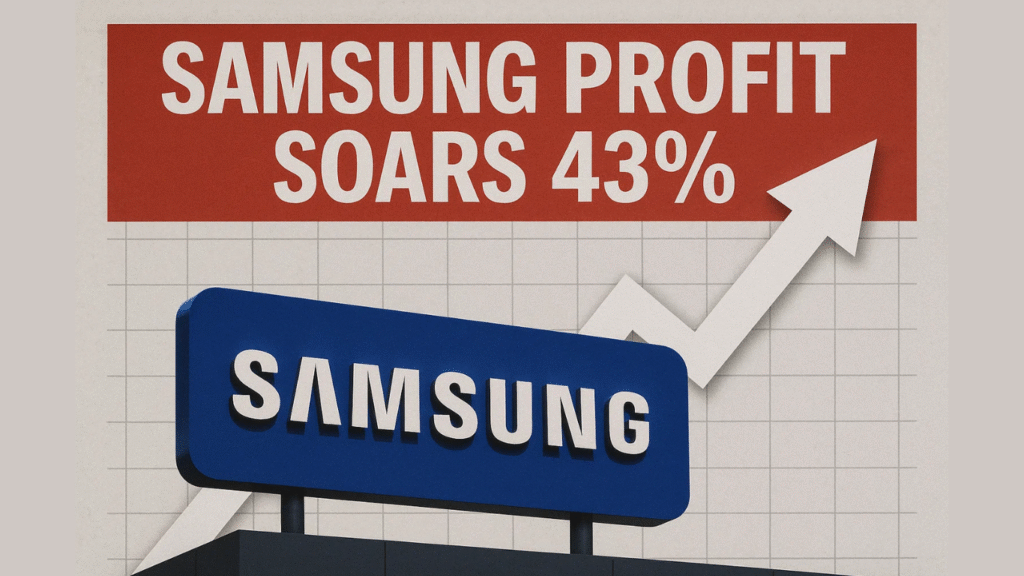Samsung Electronics is on track to post its highest third-quarter profit since 2022, signaling a strong rebound in the global chip market. According to LSEG SmartEstimate, the South Korean tech giant is projected to earn an operating profit of 10.1 trillion won ($7.11 billion) for July–September — a 10% increase year over year.
The turnaround is largely driven by a surge in memory chip prices, fueled by rising server demand and inventory restocking across data centers. Analysts note that conventional DRAM pricing strength has offset weaker volumes of high-bandwidth memory (HBM) chips, which Samsung has yet to fully supply to Nvidia.
DRAM chips — widely used in servers, smartphones, and PCs — have seen a 171.8% year-over-year price jump in Q3, according to TrendForce. This spike comes as hyperscalers and AI firms ramp up investments in computing infrastructure to support services like ChatGPT and other generative AI models.
Delays in HBM3E Hurt Market Share
While Samsung’s traditional memory business has surged, the company’s delayed rollout of its 12-layer HBM3E chips has limited its share of the AI chip boom. Competitors SK Hynix and Micron Technology have capitalized on this gap, securing stronger orders for AI memory solutions.
Samsung’s exposure to China, where advanced chip exports face U.S. restrictions, has also constrained growth in its semiconductor division. Still, analysts expect sentiment to improve as Samsung locks in new supply deals with OpenAI and Tesla — partnerships seen as pivotal to its recovery.
Key performance highlights:
- Operating profit: ₩10.1 trillion ($7.11B) projected for Q3 2025
- DRAM prices: Up 171.8% year-over-year
- Samsung shares: Up 43% since Tesla chip deal in July
- Foundry contract: $16.5B project with Tesla
New Partnerships Strengthen Outlook
Samsung’s growing list of AI-related contracts marks a potential turning point. The company’s collaboration with OpenAI and SK Hynix on the Stargate project highlights its ambition to supply next-generation memory for large-scale AI systems.
Additionally, a chip partnership between OpenAI and AMD, one of Samsung’s key HBM customers, could further boost Samsung’s foundry utilization. Analysts, including Ryu Young-ho of NH Investment & Securities, believe successful execution of the Tesla foundry deal could revive Samsung’s contract chip manufacturing division — long overshadowed by TSMC.
Still, headwinds persist. U.S. tariff risks and China’s tighter export controls on rare earth materials could pressure margins and delay shipments. Even so, the company’s diversified customer base and strong pricing power offer resilience heading into 2026.
Samsung will release its official earnings guidance on Tuesday, followed by full financial results later this month — data investors will watch closely for confirmation of a long-awaited chip recovery.


